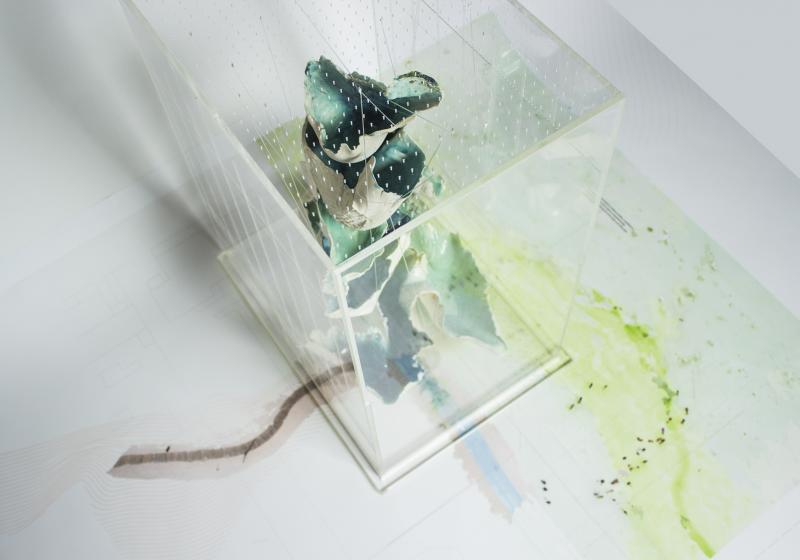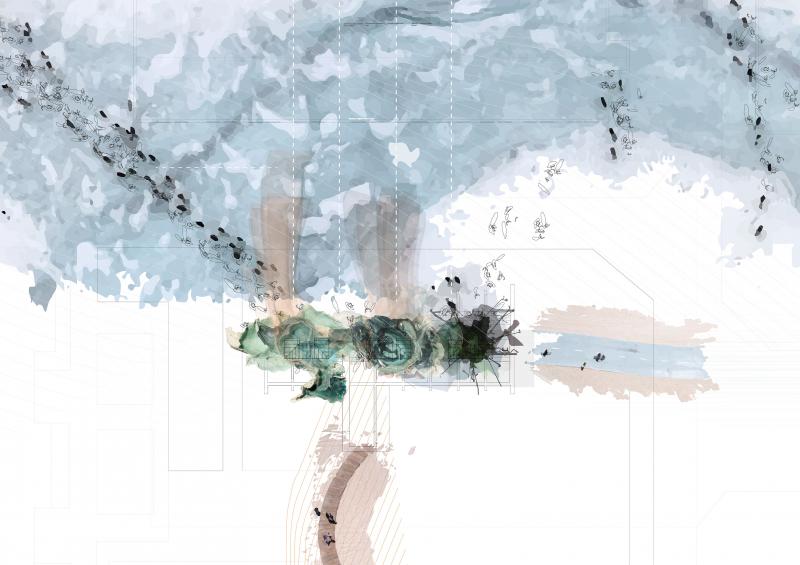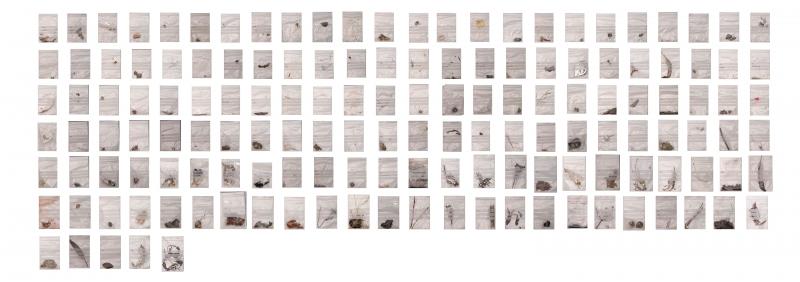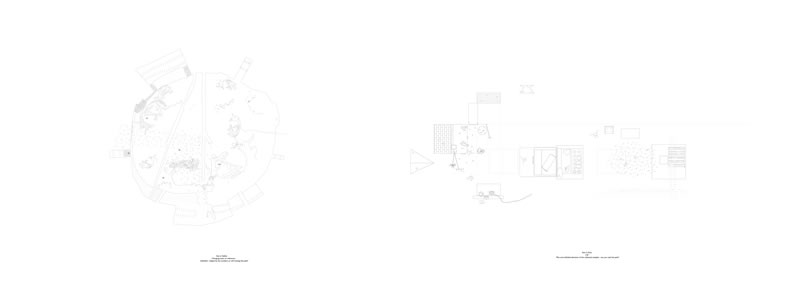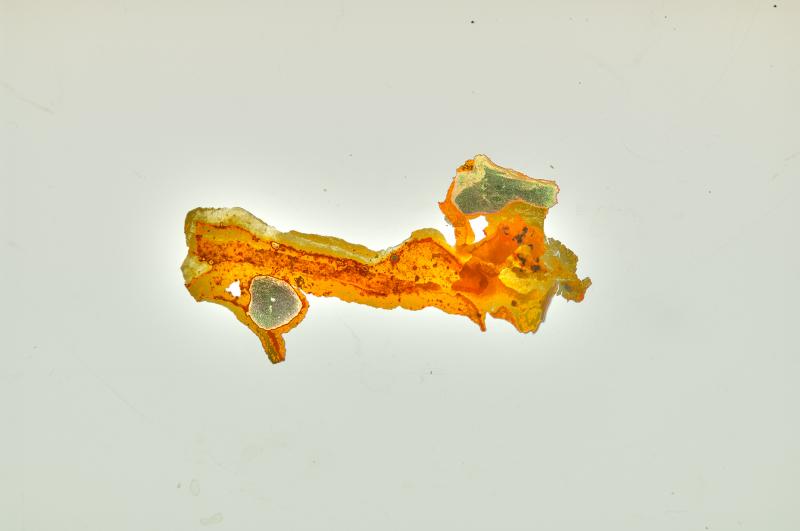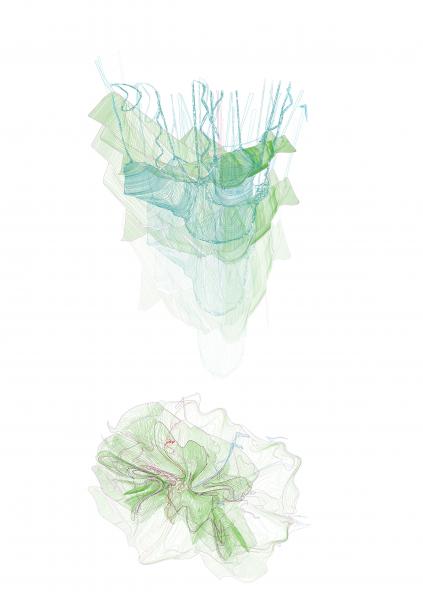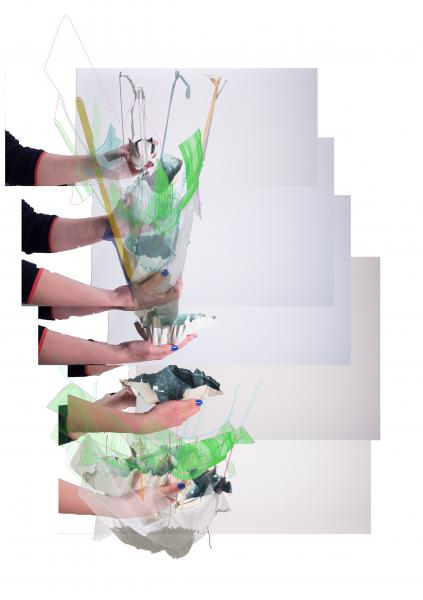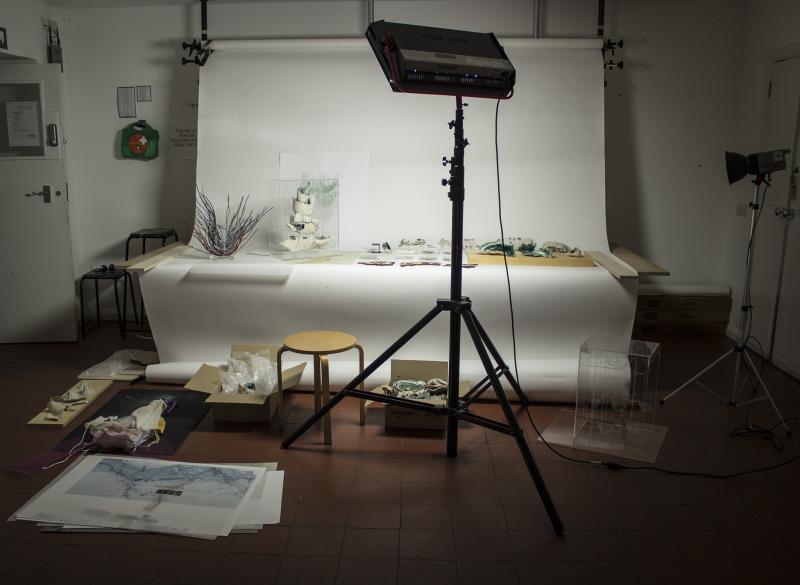Kasvi Kasvaa Syo Sato Kasvaa - Plant Grow Harvest Eat Grow
Spacial intervention in Alvar Aalto's 'endangered' factory building in Oulu, Finland.
Cuts in what used to be an envelope for a building that stored wood pulp - owned by an english tissue factory. The ground floor wall facing the north is removed, to let reindeers perform. Lichens are being grown in a ceramic structure and eaten by both reindeers and tourists. Reindeers are eating the lichens ( their saliva is an energiser for the fungus), while 27 meters up, tourists hold in their forks Centraria Islandica. Top walkway becomes the space for a restaurant where tourists can only serve lichens. The remains are then composted within the same structure.
My project tackles the idea of cycles in nature and questions the limitation that architecture faces when choreographing such complex systems.
Going twice to Finland where I started discovering its histories and popular stories I identified three of its main actors - lichens, reindeers and tourists. Managing to analyse data from a few of the 273 samples that I collected, almost like an archaeologist, I started looking at both past and future.
The first record of lichens being used by people in this territory dates back to the 5th century, when Saami people used to make alcohol out of it. In the great hunger years, finish people would dry lichens and make flour out of it, being an essential day to day ingredient. Nowadays there is a huge export of lichens mainly to Japan and Germany - used for garden and cemetery decoration or used as food delicacy (like Umbilicaria esculenta in Japan) or a dessert (like Cetraria islandica in Scandinavia).
We can question whether lichens have an economical or social value, but surely they are embedded in the finish heritage.
Every good thing brings a not so good thing, right? It is the second actor that comes in. Reindeer (Rangifer tarandus) loves eating lichens (Cladonia rangiferina). They even partially share their name. Reindeers depend on lichens but because of the extensive harvesting, they barely manage to get a taste of lichens.
Tourists want local experiences - to consume the specificity of certain places. Finland's main attractions are its reindeers and its wildlife placed within this amazing scenery.
Identifying these three main actors (lichens, reindeers and tourists) and understanding their complexities, my project creates a self sustained common ground in Aalto's storage building. The removed wall not only creates a path for the reindeers to access the building, but it creates a door for nature to feed back nature.
reindeers, tourists, lichens and Finland
from 273
Obsession for collecting but as well getting rid of a possible grid. Used 'sous vide' bags to speculate and possibly translate a way of Heston Blumenthal's way of cooking in architecture
sites
I should not use the 's', but we actually had another piece of Finish land to survey. Nellim was far up north, close the Russian border, and for me it was important to understand the finish flora and fauna. While in Oulu we had a derilict building by an iconic architect, Aalto
sample 71
HDR editing to emphasise the different 'histories' in the same lichen. Reindeer' saliva with green
First tests - pouring stoneware in lycra
From sous vide samples to a third dimension using ceramics. Short time, big jump!
time lapse
a way of mapping the trace of time while pouring the stoneware in the fabric parachutes
all together
first test with the ceramics, line drawings and lycra 'moulds' sitting in a common ground piece
have a seat..
about Aalto

